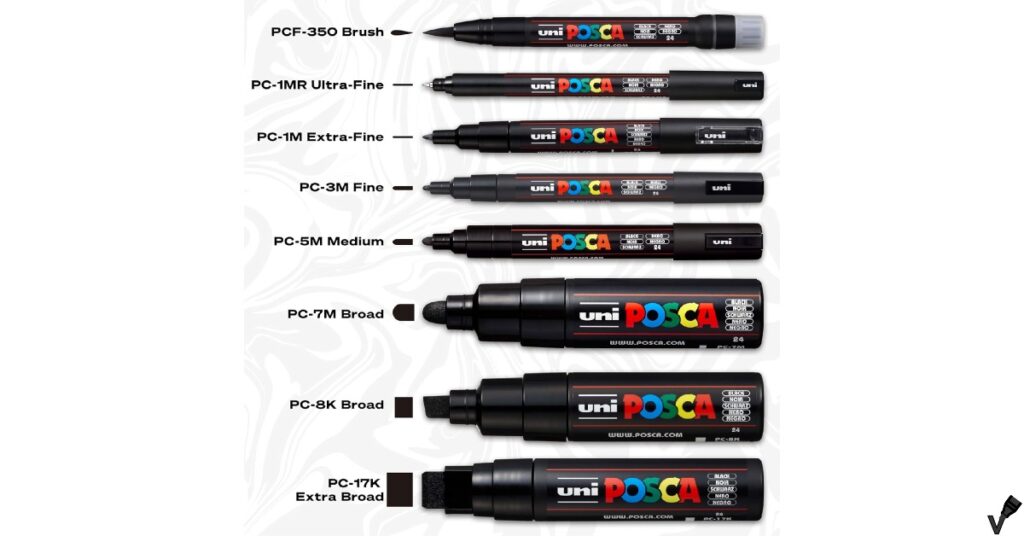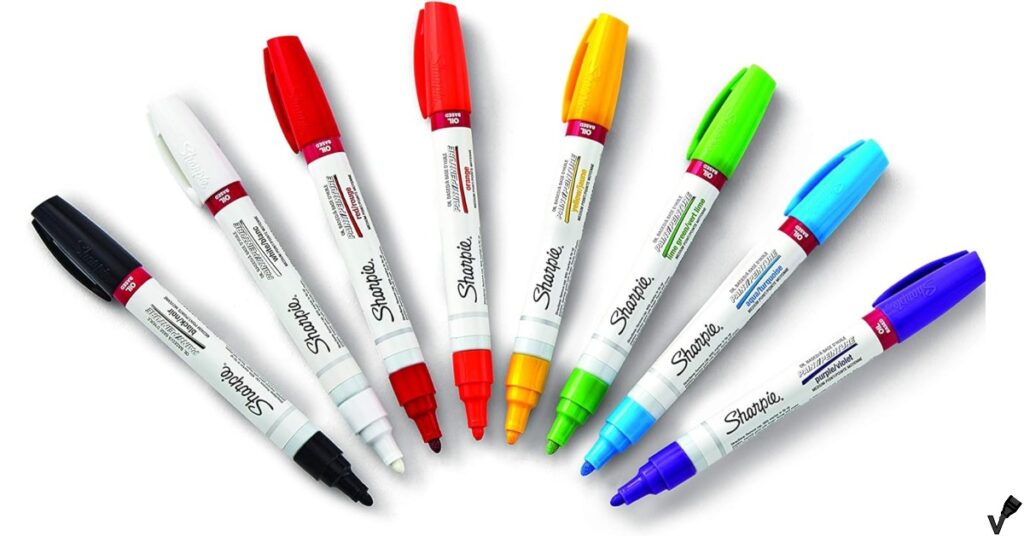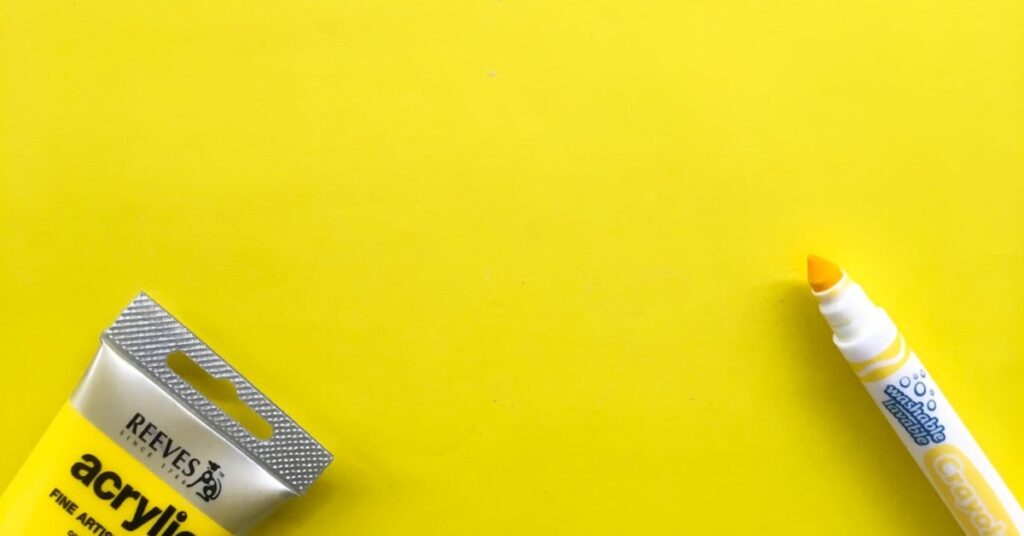Key Highlights
- Acrylic paint markers and oil paint markers are both popular choices for artists looking for vibrant and long-lasting colors.
- Acrylic markers are known for their fine tip, which allows for precise and detailed artwork.
- Both types of markers can be used on a variety of surfaces, including canvas, wood, glass, and more.
- Acrylic markers offer quick-drying properties, while oil markers provide a more durable finish.
- Artists can achieve vibrant and colorful paintings with both acrylic and oil paint markers.
Introduction
There are numerous tools that artists can use to create their art pieces. One of these common choices used by most artists is using a paint marker. The paint marker is a very versatile medium that merges the best parts of markers with paint’s brilliant color. The most common kinds are the acrylic and oil paint markers.
Acrylic paint markers are fitted with a very fine tip, like the Artistro extra fine tip for example, and this becomes very helpful to the artist in producing very good details and outlines in his work. It also brings control and precision into their work, reducing much hustle in trying to achieve the desired effect. The surfaces one can work on include canvas, wood, glass, and many more. It can work on any surface, and this versatile use is what makes it a very popular choice among several artists who like to experiment in different media and surfaces.
On the other hand, oil paint markers have a slightly different array of advantages. The colors are intense and bright. They provide a durable finish with no fear of fading and cracking over time. Many surfaces are compatible with oil markers, making it versatile to use among artists.
Both acrylic paint markers and oil paint markers are their own beast with their own characteristics and advantages. Ultimately, which one is used comes down to personal preference and what one is looking to achieve in the final artwork. Let’s now take a deeper look at each of these.
Understanding Acrylic Paint Markers
Acrylic paint markers are one of the most versatile tools an artist could use. They come in precision with vibrancy; the colors are breathtaking. These markers, also known as acrylic marker pens, come with tip sizes from fine to chisel, according to the needs of an artist. These can be used over numerous surfaces, whether it’s a canvas, mug, or even on stone surfaces. This is what makes it important to have for any artist. With the quick-drying nature of these markers, acrylic paint ensures that an artwork is done well in a speedy manner, which is both good for beginners and professional artists.

The Basics of Acrylic Markers
These Acrylic markers are rather a flexible tool that brings the convenience of a marker with the completeness of acrylic paint. Usually, it has quite a fine tip that can be used on various surfaces: paper, stone, and so on. They have bright colors and strong ones that are quickly drying and can be combined with many kinds of artists. Easily paint with the control and precision you need to produce vivid paintings using chisel or dual-tip designed acrylic markers.
Advantages of Using Acrylic Markers
Acrylic markers are versatile and easy-to-use tools for any artist. With their fine tip, along with the richness of colors, one can contribute to really nice, precise, and vibrant painting on many kinds of surfaces. Acrylic paint markers are also very efficient, for these are fast-drying. These markers are also durable and provide UV resistance for long-lasting artwork. They are easy to use for control and flexibility, giving the artist an opportunity to take the process of creativity to a higher level of work.
Common Applications and Surfaces
Acrylic markers are very versatile and can work on paper, wood, glass, metal, and even fabric. They are versatile, ranging from crafts and art projects to personalizing mugs, DIY home décor, and bright canvases. Whether you are a professional artist or a hobbyist, the opportunities are borderless with acrylic markers on any kind of substrate, which lets you take your creativity one step further. Learn how to use acrylic paint markers on a diverse range of media for great, colorful creations.
Exploring Oil Paint Markers
Oil-based markers offer a unique alternative to their acrylic counterparts. With their rich and smooth application, oil markers provide artists with a different texture and finish. These markers are favored for their ability to blend seamlessly on various surfaces, including paper, wood, and glass. Artists appreciate the extended working time that oil markers offer, allowing for more intricate details and shading in their artwork. Additionally, oil markers are known for their vibrant and long-lasting colors, making them a popular choice for detailed and high-quality pieces.

Introduction to Oil-Based Markers
However, Oil-based markers will exhibit a special difference from their Acrylic counterparts. Rich and smooth oil markers give the artist texture and finish upon application. The markers are sought after for their ability to blend on paper, wood, and glass. With a long working time, it will be an enjoyable moment for the artist working on the detail and shading. Moreover, Oil-based markers have very vibrant and permanent colors, being sought after for fine and high-detail work.
Benefits of Choosing Oil Markers
The rich colors of oil markers are complemented by a bright shine that gives your artwork a fresh look. They blend perfectly, and you can create a gradient or shade your piece. Oil markers are so durable when dry, thus being resilient to surfaces of all natures. They are good on materials like wood or stone surfaces, being versatile for other creative projects. Their oil-based composition makes for the smoothest applications, ensuring intensive layering and detailed work without hiccups. Next-level pigment quality gives life to your creations using oil markers.
Suitable Surfaces for Oil Markers
Oil-based markers are excellent and work really well on all types of surfaces, making them versatile for different art projects. The best surfaces to use these markers on are wood, paper, cardboard, metal, and glass since they are oil-based. These surfaces can produce very little resistance to the paint, and therefore, the oily quality of the paint markers effortlessly glides across, producing shiny and long-lasting works of art. Trying out these kinds of markers on unconventional surfaces can take your art to the next level, with textures and finishes that magnify your creative expression.
Example of Acrylic Paint Markers
| Marker Name | Brand | Features |
|---|---|---|
| Posca Paint Marker | Uni | Water-based, opaque, multiple surfaces |
| Montana Acrylic Marker | Montana Cans | High covering, UV-resistant, refillable |
| Liquitex Professional Paint Marker | Liquitex | Lightfast, permanent, fine and wide tips |
Comparing Acrylic and Oil Paint Markers
The acrylic paint markers are filled with colors and are rich and vivacious enough to be set on almost any surface. The oil paint markers give a different level of color brilliance, thus providing a different kind of finish that caters to another artist’s selection of style. Acrylic markers are quicker and more durable compared to oil markers. Oil markers are much slower in drying and more durable. The pros of each kind, with respect to handling and control, have made them the preference of most artists for their creations in a wide range.
Color Brilliance and Finish
Another key comparison of Acrylic Paint Markers is in brilliance of color and finish with Oil Paint Markers. The color brilliance offered by the Acrylic Markers is vivid and bright, with a matt finish, and the surface offers a canvas to create an exciting, colorful painting on any other surface. The Oil markers will give you deep, rich color with a shining finish to give your work that professional touch. The choice of two depends on the result and surface being used; thus, the two offer unique features to enhance your work.
Drying Time and Durability
Acrylic Paint Markers will dry quickly and are effective for artists who need fast results. These markers are durable in the type of artwork you do, making sure they stay for quite some time. Oil Paint Markers may take a bit longer to dry, but they will be very much long-lasting. So, the choice between the two would depend on the creative process through which you pass and the desired output of the artwork. Think of the balance between drying time and the durability of the artwork when choosing the right paint markers for your projects.
Ease of Use and Control
Acrylic paint markers are easy to use and offer advanced precision control, perfect for both the beginner and professional artist. User-friendly design allows these markers to be used easily on all kinds of surfaces for high flexibility to make the smallest detail, even if applied to canvas or wood. The ergonomic grip, combined with fine and chisel tips, guarantees that there are smooth strokes and perfect results on any surface, with artistic projects taken to the next level with no parallel convenience and finesse.
Example of Oil-Based Paint Markers
| Marker Name | Brand | Features |
|---|---|---|
| Sharpie Oil-Based Marker | Sharpie | Quick-drying, water-resistant, multiple surfaces |
| Sakura Pen-Touch Marker | Sakura | Permanent, opaque, writes on metal, glass, plastic |
| Pilot Super Color Marker | Pilot | Fade-resistant, waterproof, vibrant colors |
Tips for Using Paint Markers Effectively
Just make sure, while working with acrylic paint markers, that the surface you’re working on is prepared, as well as clean and dry. Use blending techniques to create special effects, gradients, shadows, and more. If you’ve made a mistake, correct it quickly with a dab of alcohol on a cotton swab. Use a special nib-cleaning device often to maintain top performance. For the best results with oils, apply on non-absorbent surfaces such as glass or metal.
Surface Preparation Tips
Before starting your project with acrylic or oil paint markers, make sure your surface is clean and dry. Use priming with surfaces like wood or canvas for better adhesion with acrylic markers. You can also draw on primed surfaces with oil markers, directly on glass, and even on metal. Experiment with texture and varied finishes for unique effects. Properly prepared surfaces can both enhance or bring your artwork to a whole different level, enhancing colors that show on the surface itself. So consider surface type and its absorbency when working to optimize your painting experience.
Blending Techniques for Paint Markers
Paint markers have smooth blending techniques and are used to create transitions between colors by layering and mixing the colors on the surface. You place a lighter color first, then, place in little amounts of a darker color in places. Blending should be done right on the edge where two or more colors meet. This can be done with some pressure using a paper towel for smudging or a blending tool for better precision. Practice with all kinds of pressures and strokes to be able to get nice, seamless blends that can stand with vibrancy and depth in your work.
Fixing Mistakes and Cleanup
Acrylic paint markers are easy to fix; you just have to do it fast. A clean pair of tweezers can lift away errors before they have a chance to set in. Usually, most mistakes can be removed from the surface by running a cloth dampened in rubbing alcohol over it without harm to the painting. Just be sure to give the nibs a soft wipe on a damp cloth to avoid clogging. Oil-based markers are cleaned with a mild solvent, such as mineral spirits, best in a well-ventilated area. Maintaining proper care helps keep your markers alive and your work presentable.
Creative Projects with Paint Markers
Give life to all the real you using acrylic paint markers on all kinds of expressive projects: DIY home decors, apparel, or accessories. Ordinary stuff turns into colorful, personalized creations with different vibrant colors on different surfaces. Step up your art game with the help of acrylic paint markers on your canvas work. Each project is a unique manifestation of your imagination, complete with versatility and ease when working with a paint marker pen. Welcome to the world of art, color, and precision that acrylic markers make possible.

DIY Home Decor Ideas
Transform your living space with DIY home decor ideas using acrylic paint markers. Revamp plain mugs with personalized designs or elevate flower pots with vibrant paintings. Create unique stone coasters or color-coded storage jars for a touch of creativity. Unleash your artistic flair on photo frames, mirrors, or even furniture to add a personalized touch to your home. Express yourself through custom wall art or decorative signs using acrylic paint markers for a budget-friendly and stylish home makeover. Let your imagination run wild!
Customizing Apparel and Accessories
Transform your wardrobe with the vibrancy of Acrylic Paint Markers. These versatile tools allow you to personalize clothing, shoes, bags, and accessories with ease. The fine tips of these markers enable intricate designs and precise detailing on various fabrics. From revamping old denim jackets to adding flair to canvas sneakers, the possibilities are endless. Create unique and eye-catching fashion pieces that reflect your style effortlessly. Express your creativity on textiles and accessories in a fun and innovative way.
Artistic Projects and Canvas Work
For artistic projects and canvas work, Acrylic Paint Markers offer versatility and precision. With their fine tips and vibrant colors, these markers elevate your artwork to the next level. Whether you’re creating intricate details or broad strokes, acrylic markers allow for seamless control and blending on canvas surfaces. Express your creativity effortlessly with the rich pigments and smooth application of acrylic paint pens. Transform your canvas into a masterpiece with the dynamic capabilities of acrylic markers.
Conclusion
In conclusion, you need to know the difference between Acrylic and Oil paint markers so that you can choose the right medium for your creative projects. An Acrylic marker is known for being fast-drying and its ability to work on most surfaces. Conversely, markers with oil ink in them offer rich color and great blendability. Some important features one should look for include brilliance, drying time, and ease of use. Try out different techniques like blending and surface preparation to bring life into your creation. Whether you are working on some DIY home décor, customizing some apparels, or canvas work, possibilities are just endless with both acrylic and oil paint markers in bringing out the artist in you.
Frequently Asked Questions
-
What are the main differences between acrylic and oil paint markers?
Acrylic paint markers use water-based paint which dries quickly and offers a matte finish, while oil paint markers use oil-based paint that dries slower, allowing for more blending time and a glossy finish. -
Can acrylic and oil paint markers be used on the same surfaces?
Both types of markers can be used on a variety of surfaces including canvas, paper, wood, and metal. However, oil markers are generally better for smooth, non-porous surfaces. -
How do the drying times of acrylic and oil paint markers compare?
Acrylic markers dry considerably faster than oil markers. Acrylic paint can dry within minutes, while oil paint may take hours to fully dry, depending on the environment. -
Are there any safety concerns associated with using these types of markers?
Oil paint markers typically contain solvents that can be harmful if inhaled or ingested, so they require adequate ventilation. Acrylic markers are usually water-based and safer for indoor use without special ventilation. -
What are the best practices for using oil paint markers?
It is recommended to use oil paint markers in a well-ventilated area, wear protective gloves, and ensure caps are tightly sealed after use to prevent the markers from drying out. -
How do you correct mistakes made with acrylic and oil paint markers?
For acrylic markers, you can often paint over mistakes once the initial layer has dried. For oil markers, you might need to use a solvent to remove errors, depending on the surface. -
What are the benefits of using acrylic paint markers over oil paint markers?
Acrylic paint markers offer faster drying times, easier clean-up with water, and less odor, making them more suitable for quick projects and use in less ventilated spaces. -
Can both types of markers be used by beginners?
Yes, both acrylic and oil paint markers are user-friendly for beginners, though acrylic markers may be more forgiving due to their quick-drying nature and ease of use. -
How should acrylic and oil paint markers be stored?
Both types of markers should be stored horizontally to prevent the ink from settling unevenly or causing blockages in the tips. -
What is the shelf life of acrylic and oil paint markers?
Typically, acrylic paint markers can last up to 5 years if stored properly, while oil paint markers may have a longer shelf life due to their oil-based composition, but this can vary based on brand and usage.

